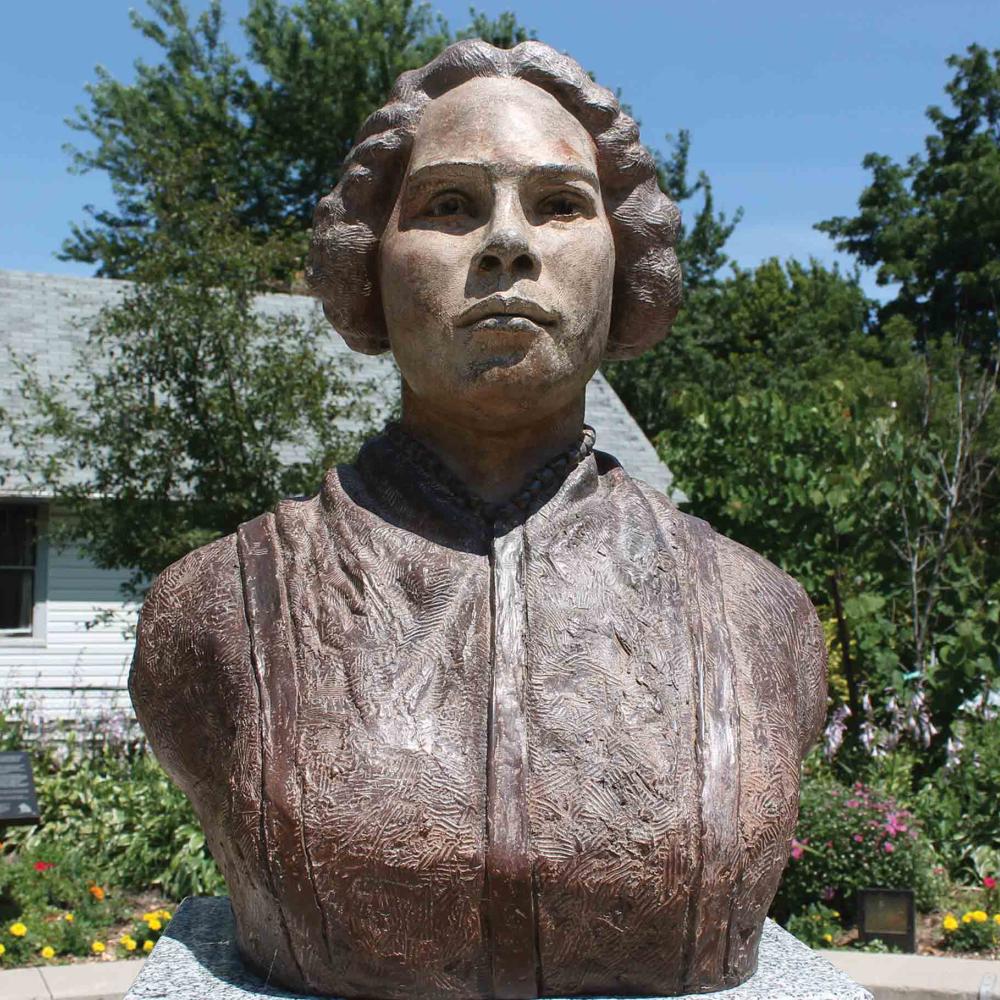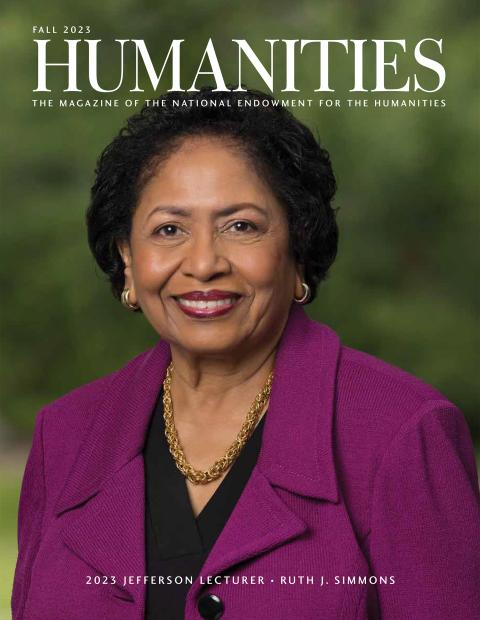Mary Ann Shadd Cary was beautiful, apparently. W.E.B. Dubois described the light-skinned writer activist as “tall and slim, of that ravishing dream-born beauty,—that twilight of the races which we call mulatto.” Black historian William Wells Brown said of Shadd Cary, “she has bright, sharp eyes, that look right through you.” That was another thing people noticed about Shadd Cary: She could be insistent and unyielding. Brown described her as “resolute and determined,” and added, “you might as well attempt to remove a stone wall with your little finger, as to check her in what she conceives to be right and her duty.”
October 9, 2023, marks the 200th anniversary of Mary Ann Shadd Cary’s birth. Shadd Cary had a significant influence on the advancement of Black people and women in the late nineteenth century through her teaching, writing, and bold advocacy. She worked tirelessly throughout her life, declaring, “It is better to wear out, than to rust out.”
Shadd Cary descended from generations of Black people who were free. The progenitor of the Shadd line in America, her paternal great grandfather, Hans Schad, was a Hessian soldier in the French-Indian War, who stayed in the colonies to become a butcher and married a free Black woman. Mary Ann’s father, Abraham, was a successful businessman, landowner, abolitionist, Underground Railroad participant, and a leader of the free Black community in Wilmington, Delaware, in the early 1800s.
Abraham moved his family to neighboring West Chester, Pennsylvania, in 1833, seeking more freedoms, particularly education for his children. Mary Ann studied with Phoebe Darlington, a Quaker, from whom she learned the educational basics and lessons in humanitarianism.Once Mary Ann completed her education, she left home to teach, fortified with her father’s example of determination and strength of spirit and her newly acquired Quaker philosophy.
She wrote essays for local newspapers and traveled to give lectures, bluntly urging Black people to “do more and talk less.” She published a short pamphlet in 1849 entitled “Hints to the Colored People of the North” in which she encouraged Black people to, among other things, prepare and maintain budgets. Frederick Douglass was impressed with the pamphlet and invited Shadd Cary to write for his paper, North Star. The two became lifelong friends.
In the difficult years leading up to the Civil War, the Shadd family migrated to Canada West (now Ontario). Here, the Shadds joined an established community of Black American expatriates. Mary Ann opened an integrated school. In 1852, Mary Ann published “A Plea for Emigration or Notes on Canada West,” encouraging Black Americans to move to Canada, where, she promised, they would find excellent farming conditions, abundant job opportunities, and integrated schools and churches. In March of 1853, following a dispute with Henry Bibb, publisher of the influential Black newspaper, Voice of the Fugitive, she launched her own newspaper, called the Provincial Freeman. This new adventure secured for Shadd Cary the distinction of being the first Black female editor and publisher of a newspaper on the North American continent.
Shadd Cary struggled to keep her school and her newspaper afloat. She married a local barbershop businessman, Thomas Cary, and gave birth to daughter Sarah in 1857. Not long after, her paper folded due to financial problems. Thomas Cary died in 1860, just months before the birth of their son, Linton. Now a widow with two children, Shadd Cary accepted a commission from the U.S. government to recruit Black soldiers for the Union Army. Shortly after the end of the Civil War, she answered another call, this one for Black teachers to educate the influx of families and children in the nation’s capital.
In Washington, D.C., Shadd Cary entered into her final and perhaps most fervent period of activism. While teaching and serving first as principal of the Lincoln Mission School and then at Second District Grammar School in the John F. Cook building, she threw herself into public speaking and writing, particularly in support of the women’s suffrage movement. She attended the local National Woman Suffrage Association meetings and reported back to the Black community on what was being discussed and planned. She appeared before the House of Representatives Judiciary Committee to argue for suffrage—for all women.
She entered Howard University’s first law school class—the only female—in 1869, and, after many interruptions, finally earned her law degree at the age of sixty. In the final years of her life, she used her knowledge to help others in need of legal aid.
Shadd Cary died of stomach cancer in 1893 at the age of sixty-nine. At her funeral service, the Rev. Daniel Payne proclaimed, “She ranks among the reformers of the time. She left to others to carry forward the torch she had ignited.” Mary Ann Shadd Cary—teacher, abolitionist, reformer, journalist, editor, orator, lawyer, wife, and mother—lived a life that reflected the Provincial Freeman’s motto, “Self-reliance is the true road to independence.” For Shadd Cary, “freedom” meant not freedom from slavery but, rather, freedom to accomplish all that she aspired to.
Shadd Cary and her contributions are slowly becoming more widely known, partly through my talks about her through Delaware Humanities’s speakers program. She was inducted into the Delaware Women’s Hall of Fame and the National Women’s Hall of Fame. She is remembered on historical plaques in Canada—for her leadership and for the Provincial Freeman—and her home in Washington, D.C., is on the National Registry of Historic Places. The National Museum of African American History and Culture includes a display remembering Shadd Cary’s oratory skills. In her home state of Delaware, Wilmington renamed its main post office the “Mary Ann Shadd Cary Post Office,” in 2021, and at the center of town you can visit a historical marker honoring the contributions of both Abraham Shadd and Mary Ann Shadd Cary.


